Physical Address
304 North Cardinal St.
Dorchester Center, MA 02124
Physical Address
304 North Cardinal St.
Dorchester Center, MA 02124
China recently launched the space science education brand "Tiangong Class" to give full play to the Chinese space station. The space lecture was an eye-opening experience that would ignite kids' interest in science.
China recently launched the space science education brand “Tiangong Class” to give full play to the Chinese space station. The space lecture was an eye-opening experience that would ignite kids’ interest in science.
▲Live rerun: Special coverage of first class from China’s space station | By CGTN
Lecture content
1. Life scenes of astronauts in the space station
2. Space cytology research experiment demonstration
3. Space turnaround
4. Disappearing buoyancy experiment
5. The Surface Tension of The Water
6. Water sphere optical experiment
7. Effervescent tablet experiment
How do astronauts turn around in Space? The three astronauts first demonstrated the amazing phenomenon of turning around in space. This ordinary action, which originally has zero difficulty factor on the ground, hides a high level of physics knowledge in space.
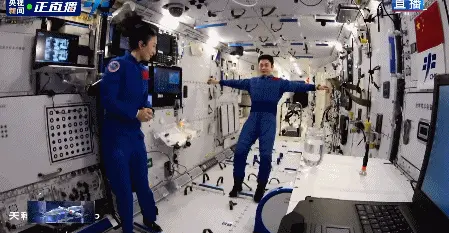
The core keyword of the space turn experiment is called angular momentum. Angular momentum is a physical quantity that describes the rotation of an object. This experiment shows that in the microgravity environment, the astronaut does not touch the space station, similar to the ideal state to verify “no external torque, the object will be in the conservation of angular momentum”. When the astronaut’s upper body turns to the left, the lower body will turn to the right according to the principle of angular momentum conservation.
Scientific Description
Another action is when the astronaut extends the body, because the mass is distributed farther from the axis of rotation, the inertia of rotation is greater, so the angular velocity is slowed down, in layman’s terms, the rotation is slow. When the limbs are retracted, the inertia of rotation is small, the angular velocity will increase, the intuition is that the rotation speed becomes faster.
In many science fiction movies there have been such shots: once gravity disappears, buoyancy is gone, and people are swimming harder. Space teacher Wang Yaping carried out the buoyancy disappearance experiment, showing this phenomenon.
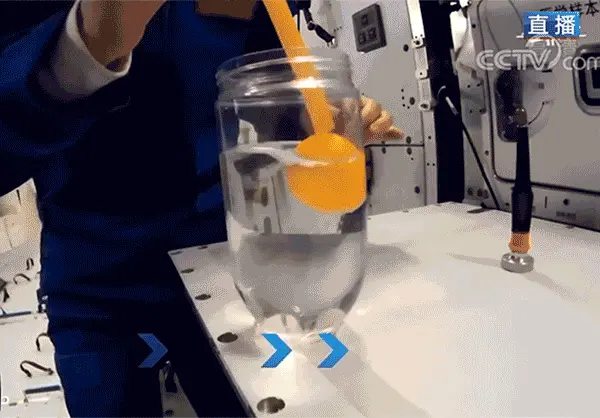
What this experiment shows is the phenomenon of buoyancy and gravity together. Buoyancy comes from the difference in pressure of the liquid at different depths caused by gravity. When gravity disappears, the internal pressure of the liquid is the same, and the buoyancy force disappears. However, the Earth’s surface is difficult to make the buoyancy force disappear, and this experiment is difficult to demonstrate visually. In the microgravity conditions of the space station, the companion relationship between buoyancy and gravity can be very clearly shown.
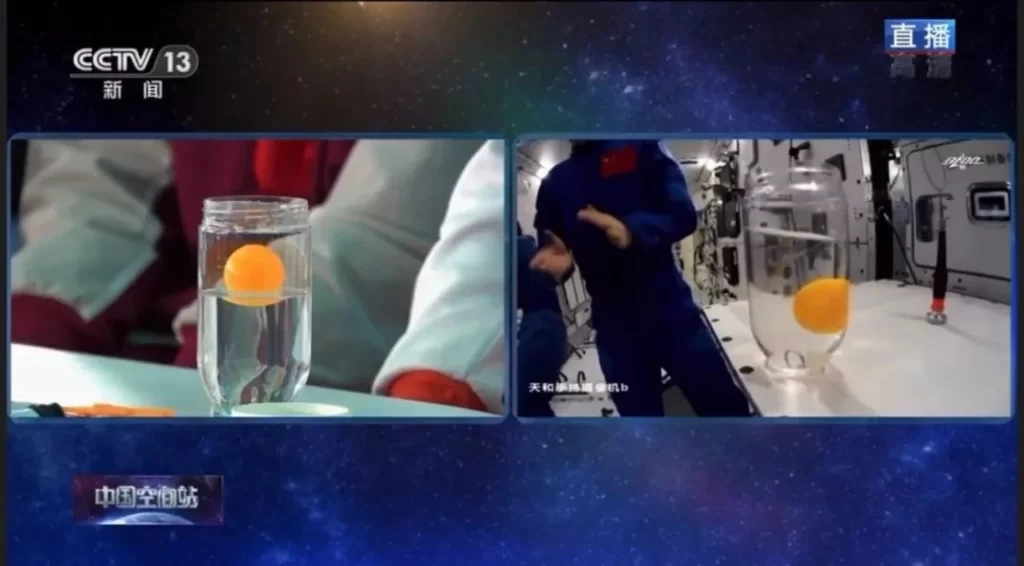
In the water film experiment, Wang Yaping put the flower origami she and her daughter made on the earth into the water film, and the beautiful flowers bloomed instantly.
Wang Yaping said to the students, “You are the flowers of the motherland, I hope all your dreams can bloom in this vast universe!”
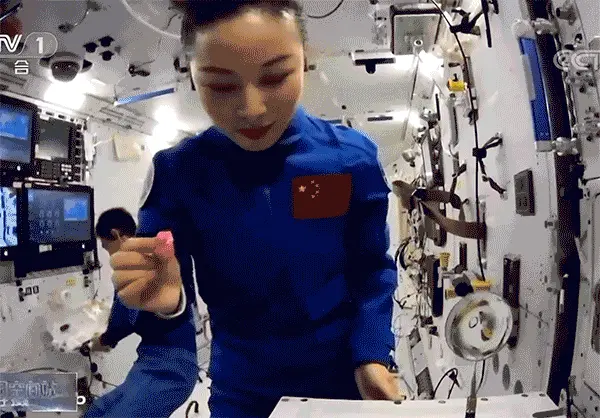
Scientific Description
Because water with high surface tension can also stretch into a water film in a microgravity environment, the flowers attached to the water film also unfold because of the surface tension. The surface tension of molecules does not depend on gravity, so this experiment can be completed.
Related Science Experiments of The Surface Tension of The Water
How To Make a Paper Flower Blossom On Water?
How to Float a Paperclip On Water?
Wang Yaping injected a bubble into the water sphere, and Ye Guangfu formed one positive and one negative image in the water sphere.
Scientific Description
When the astronauts to the water ball into a bubble, because the buoyancy in space has disappeared, so the bubble will not float upward, but stay in the water ball, the water ball is therefore the bubble into two parts, the middle is air, bubbles around the water. This time the entire water ball becomes two lenses, the outer circle becomes a convex lens, so showing an inverted image, the inner circle is equivalent to the combination of two concave lenses, this time there is an upright image. So you can see two images in the water sphere at the same time, one positive and one inverted.
This experiment actually reflects three physical phenomena, the first is that in a weightless environment, the water droplet will be contracted under the action of surface tension into a near-perfect sphere of water, while on the ground, because of the influence of gravity, the water droplet is presented as a drop shape, it is almost impossible to obtain a perfect water ball. Second, is that this water sphere can be seen as a convex lens, if you stand outside the focal length of this convex lens twice, you will see is an inverted solid image. Finally, it is in the water ball into a bubble, because the buoyancy in space disappears, the bubble will not float out, it will stay inside.
This experiment on the ground can actually be simulated through the glass, but certainly not as good as the effect of the water sphere.
After the effervescent tablet meets water, it usually produces many bubbles, so what happens when the effervescent tablet meets the water ball in space?
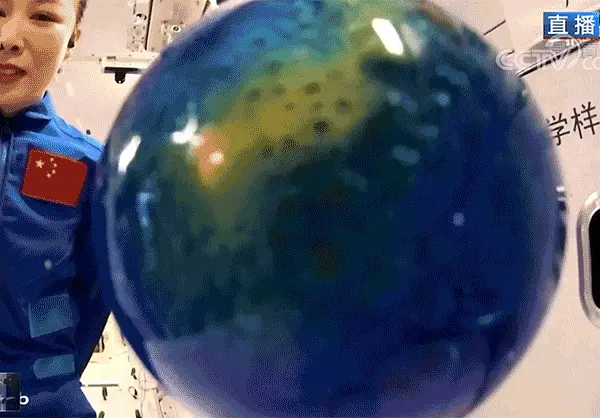
Wang Yaping put the effervescent tablet into the blue water polo, and the water polo turned into a bubble ball, like a blue earth.
Scientific Description
In the ground environment, the effervescent tablets thrown into the water ball, you can see the bubbles float, but in the weightless environment of the Chinese space station, because of the loss of buoyancy, the effervescent tablets thrown into the water generated by the bubbles no longer float, but squeeze each other, and finally will form a very interesting look, this water ball will also be the bubbles to support a larger, you can see the effect of a little expansion of the water ball.
Because the biggest difference between the space station and the ground is that the space station is a microgravity environment, but the microgravity environment for ordinary people is just a term, through these experiments we will be able to know the microgravity environment, many physical phenomena and the ground environment is different.
How to Make a Homemade Lava Lamp?
Make a Spooky Halloween Lava Lamp